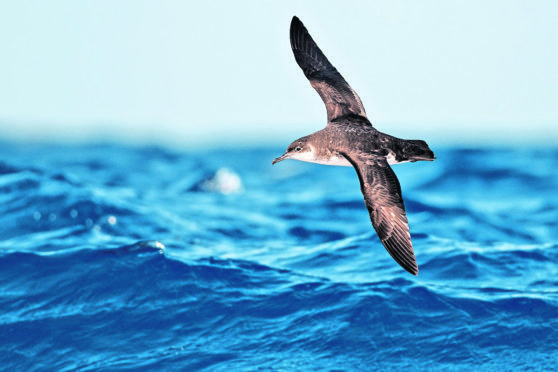A new scientific paper has explained why bright lights in a group of Highland villages are luring hundreds of a threatened bird species potentially to their deaths – and a lot is due to the moon, or lack of it.
It also says the research could lead to council street lights being dimmed at key migration times – especially on moonless nights.
>> Keep up to date with the latest news with The P&J newsletter
More than four times as many Manx shearwaters were rescued in and around Mallaig in September than in the whole of the last migration season.
Around 400 this year have clattered into homes in the Mallaig, Arisaig and Morar area.
The bright light danger faced by Manx shearwaters comes at the very start of their incredible 6,000-mile journey.
The chicks fledge from the mountains of the Isle of Rum before flying to their wintering grounds in South America.
However each year some of the young birds can become disorientated by outside lights left on in Kinloch on Rum and surrounding villages, but particularly Mallaig on the mainland.
They often crash land close to the light source and many are then killed by gulls, crows, cats or dogs.
Now a paper published in the Ibis International Journal of Avian Science has revealed that the moon and wind play a huge part in the birds’ demise.
“A model was developed that used meteorological variables and moon cycle to predict the daily quantity of birds that were recovered on the ground. The model, explaining 46.32% of the variance of the data, revealed how new moon and strong onshore winds influence grounding,” says the report.
“Thanks to these findings, rescue campaigns could focus their efforts on nights when the risk of groundings is highest or could inform local authorities under which conditions light intensity needs to be reduced.”
Last year only 42 of the birds were rescued in and around Mallaig.
Usually several hundred are saved in Mallaig, Morar and Arisaig and in 2012 there was a record 709.
